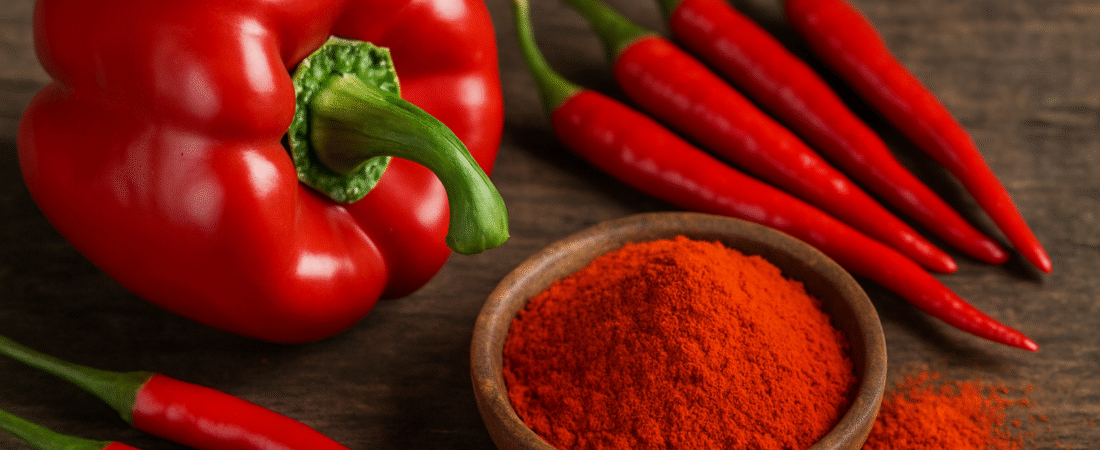Red Chilli-Spicy Hot Antioxidant
That spicy sting of Red Chili Antioxidant or smoky Paprika Health Benefits transcends flavor, igniting wellness naturally. In Ayurveda, Red Chili Ayurveda Benefits emphasize digestive fire, toxin expulsion, and energy.
Recent research demonstrates Capsaicin Health Benefits with carotenoids combat oxidative stress and shield from inflammation. Both spices support red chili for immunity & metabolism, protecting the body and increasing the energy balance.
Paprika antioxidant properties reduce inflammation and promote circulation with vitamins and minerals. Science and ancient physician colleagues; These spices are powerful warriors.
Let us discover the Ayurvedic healing properties of red chili and paprika as a spicy antioxidant from your kitchen.
In the previous series, it defined coriander leaves – fresh green Ayurvedic antioxidants from your kitchen shelf. It focuses on the benefits of coriander leaves, antioxidant strength and Ayurvedic remedies. Explanation showed how the antioxidant properties of coriander leaves create immunity by creating natural remedies for detox, digest, glow skin, and daily foods.
Red Chili & Paprika – Natural Spicy Antioxidants
Red chili antioxidant is heated with capsaicin, increases metabolism and naturally promotes digestion. Paprika health benefits offer sweetness and carotenoids that protect cells. Both spices give powerful red chili Ayurveda benefits by catalyzing digestive fire and maintaining energy balance.
Paprika antioxidant properties promote circulation and reduce oxidative stress efficiently. Applying red chili for immunity & metabolism increases the body’s protection and strength. Ancient physicians procured their detox capacity, while science displays their antioxidant capacity.
They serve as a welfare pixent watchman in the concert. Receive red chili and Ayurvedic healing properties of red chili and paprika for immunity, energy and natural welfare each day.
Nutritional & Antioxidant Profile
Red chili antioxidant power is taken from vitamin C, vitamin A, vitamin B6, potassium and powerful capsaicin antioxidant compounds.
They combat vitamins free radicals, low oxidative stress, and naturally promote immunity.
Capsaicin helps with red chili with metabolism, circulation and natural pain relief.
Paprika health benefits are obtained from essential minerals including vitamin E, carotenoids such as lutein and zeaxanthin and iron.
Paprika antioxidant properties shield cells, increase eye health, and increase healthy blood production.
Its carotenoids reduce inflammation and oxidative stress efficiently.
Combined, red chili and paprika offer synergistic antioxidant protection for health.
They inhibit cellular harm and facilitate detoxification. Spicy herbs in Ayurveda enhance immunity, increase metabolism, and normalize energy naturally.
Daily use guarantees vitality, circulation aid, and long-term health effects.
Ayurvedic Perspective
In Ayurveda, Red Chili Ayurveda Benefits emphasize its ability to stimulate Agni, the fire of digestion, in favor of balance and energy. Paprika Health Benefits enhance this by feeding the body antioxidants and minerals. Both spicy herbs in Ayurveda, clearing toxins and enhancing circulation naturally. They build immunity, increase metabolism, and enhance overall energy flow.
Their Ayurvedic healing properties of red chili and paprika promote body-mind harmony. These hot spices were highly prized by traditional healers for detoxification, energy, and enduring health.
Stimulating Digestive Fire (Agni)
Red Chili for Immunity & Metabolism increases appetite and facilitates digestion, whereas paprika aids in more effortless energy metabolism naturally.
In Ayurveda, robust digestion is rooted in health, and red chili is an important factor in igniting Agni the digestive fire.
It enhances appetite by stimulating gastric secretions, increases metabolism, and improves nutrient assimilation. It prevents weak digestion, bloating, and toxin formation (Ama).
In moderation, red chili can stimulate the senses, energize the body, and keep the metabolism in balance.
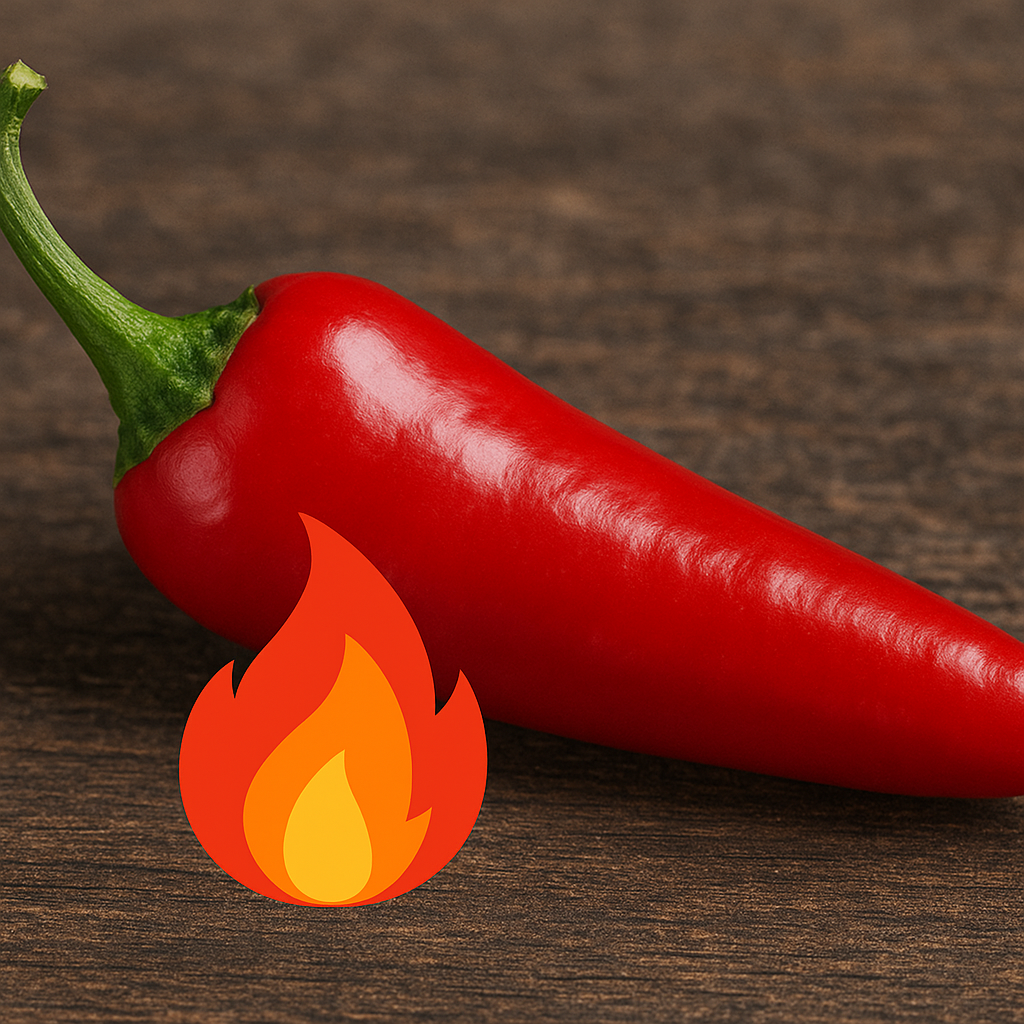
It is particularly advised in colder months when digestion already slows down naturally and Kapha predisposes to accumulation. Ayurveda accepts sweating to be a natural means of eliminating toxins, and chili facilitates this process very effectively. Its hot potency stimulates perspiration, which gets rid of stored wastes and excess water from the body.
This purgative effect aids skin radiance, enhances circulation, and safeguards against Ama (toxin) build-up. Moreover, chili stimulates circulation, which increases liver function, also assisting with detoxification. Regular but moderate usage revives energy levels, promotes cleansing, and refines the system naturally, as Ayurveda seeks to maintain internal balance as well as overall health.
Red chili also holds a special place in Ayurvedic dosha balancing. It is hot and helps to balance Kapha’s cold and heavy energy, suppressing heaviness, slow metabolism, and stagnation. It also helps to balance Vata with warmth and stimulation of circulation. However, due to its heat, chili has the capacity to burn Pitta dosha when consumed in excess, leading to acidity, skin burning, or fury.
Ayurvedic wisdom teaches moderation with chili and this is eaten with cooling foods or herbs so as to neutralize the burning effect. Properly balanced, it instills balance among doshas and stimulates the mind and body. Ayurveda has long tapped the analgesic power of chili through its active ingredient, capsaicin. Traditional use entails infusing it into oils and balm for external application to relieve muscle tension, arthralgia, and inflammation.
Top 7 Health Benefits
Immunity Booster – With high levels of vitamin C, red chili, and paprika intake boosts the defense mechanism of the body against infection and seasonal diseases.
Accelerates Metabolism – Red chili already contains capsaicin that can stimulate metabolism, increase the body burning fat, and facilitate healthy weight loss.
Digestive Support– Both spices will enhance the digestive fire (Agni) in Ayurveda, activate gastric juices, enhance nutrient uptake, and help prevent bloating.
Benefits heart health– Antioxidants, carotenoids, and potassium promote blood flow, reduce blood vessels inflammation, and help to maintain a healthy level of blood pressure.
Improves Skin & Eye Health – Paprika is a good source of lutein, zeaxanthin and vitamin E which promotes skin cell protection, skin glow and protects the eyes against free radical damage particularly in preventing age-related macular degeneration (AMD) and cataracts.
Natural Pain Relief- Capsaicin oil from chili is a natural pain reliever that relieves arthritis, muscle stiffness, and joint pain stimulating blood flow.
Detoxifies and energizes: Both spices promote sweating, liver stimulation, eliminating toxins in the body and increasing energy and energy balance in general.
Adding red chili and paprika to everyday meals gives you an effective combination of an Ayurveda and science-based restorative effects to long-term health.
Home Remedies & Uses
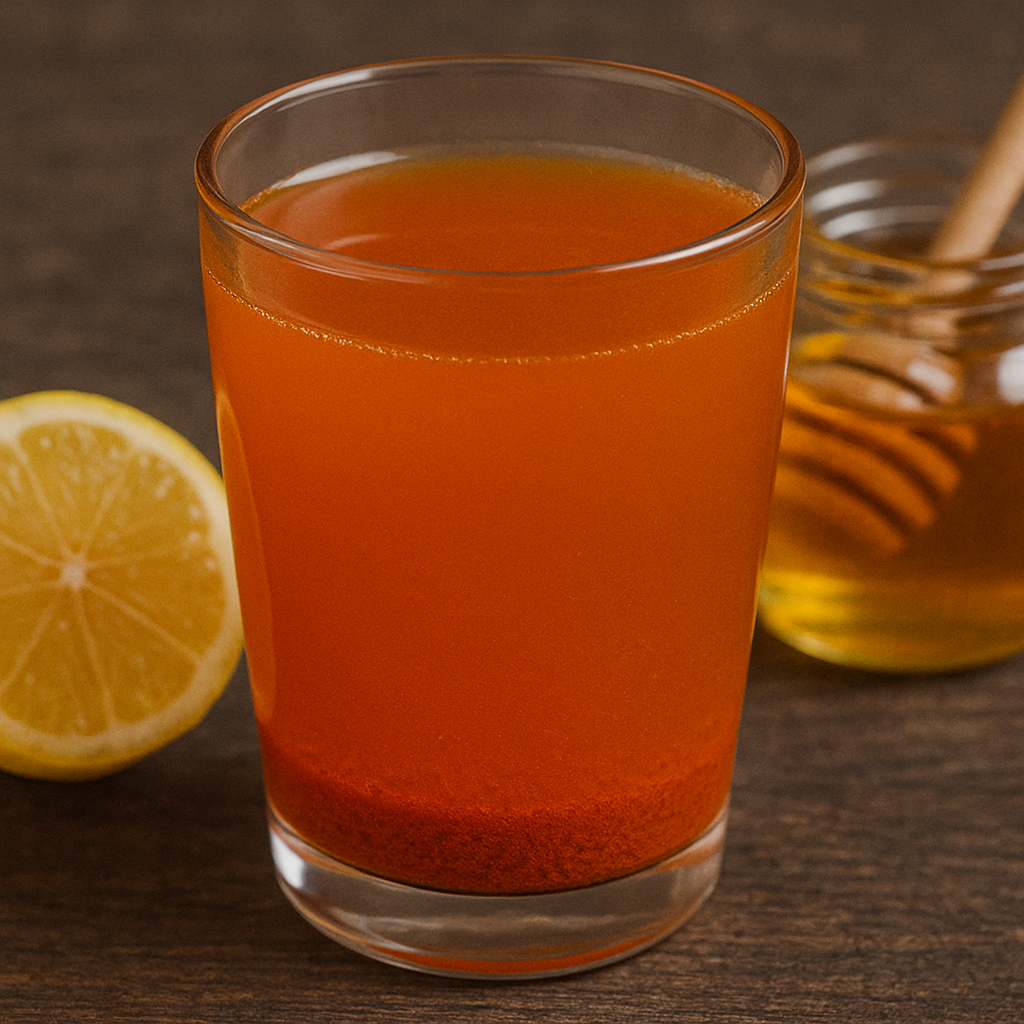
Capsaicin Oil for Pain: Add chili to sesame or mustard oil to make capsaicin massage oil.
When applied to joints and muscles, circulation is enhanced, stiffness reduced, and arthritis pain eliminated.
Capsaicin desensitizes pain receptors, providing natural relief. Always patch test first, as it can cause irritation to sensitive skin.
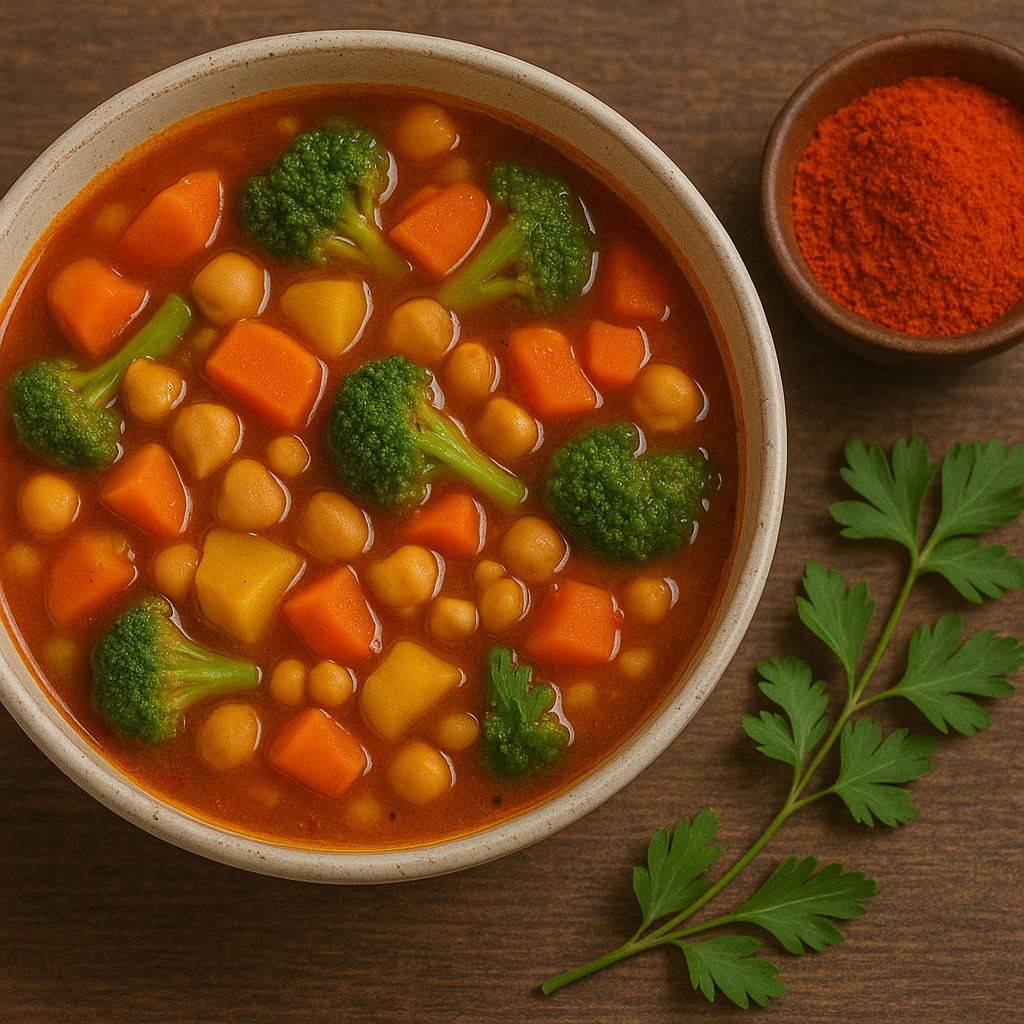
Red Chili Detox Drink: Combine a pinch of red chili powder with lemon juice and honey in warm water. This detox drink activates digestion, increases metabolism, and enhances fat burning. Consume it moderately to assist in flushing out toxins naturally, energize the body, and aid in daily detox and weight control.
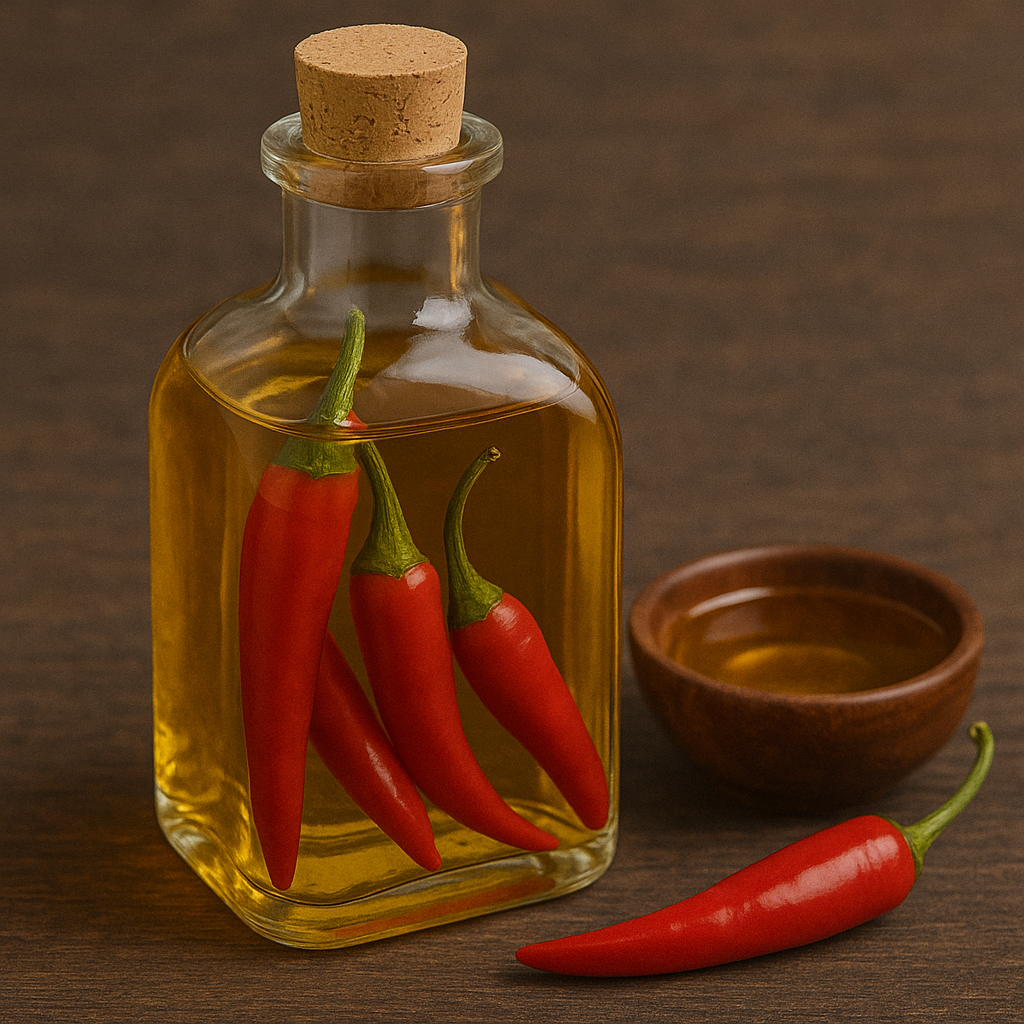
Culinary Uses: Add paprika or chili to soups, curries, stir-fries, or roasted vegetables for nutrition and flavor.
Paprika gives a sweet-smoky flavor, while chili delivers heat that accelerates metabolism. Everyday cooking use guarantees the intake of antioxidants that ensures immunity, heart protection.
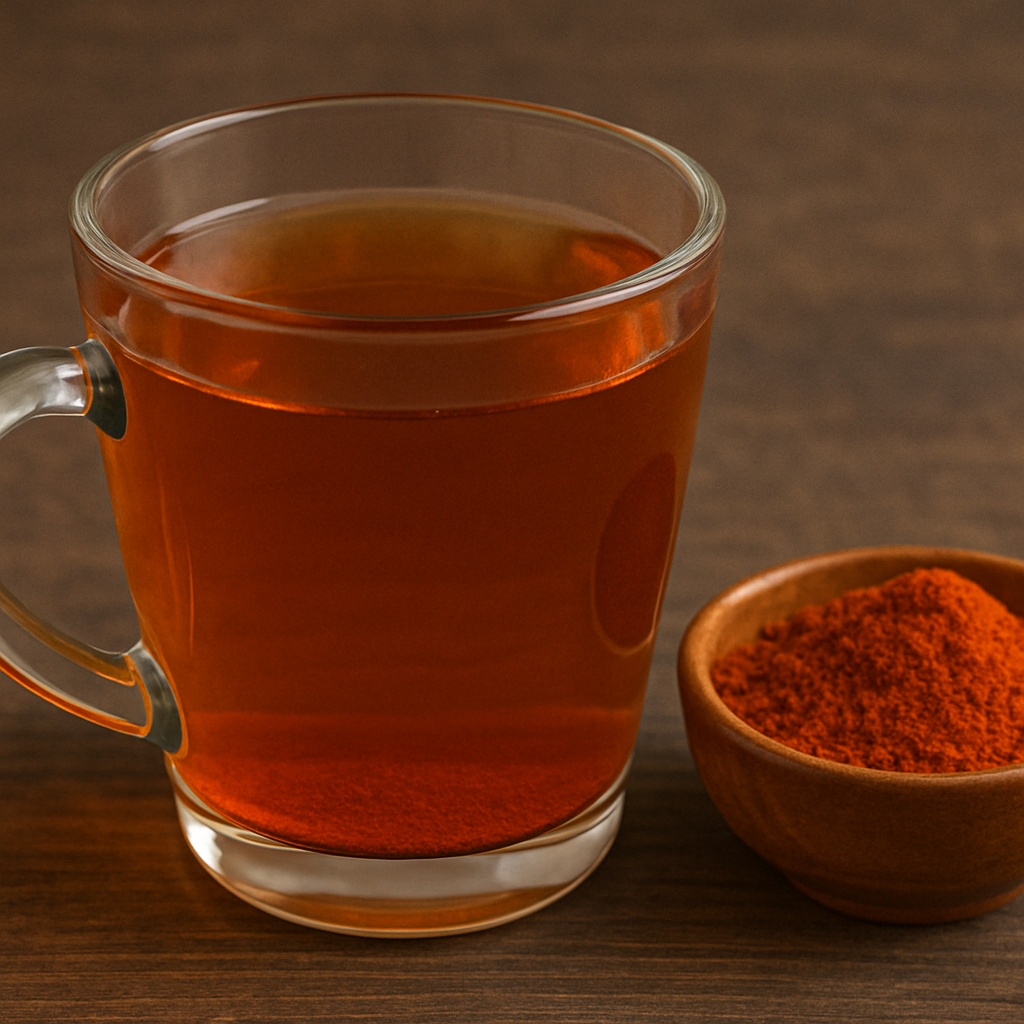
Paprika Tea: Soak a teaspoon of paprika in boiling water to make a gentle, antioxidant-filled tea.
It stimulates immunity, helps digestion, and activates circulation mildly without too much heat.
Perfect to use every day, paprika tea is calming, invigorating.
It assists the body in counteracting oxidative stress naturally while keeping overall health good.
It control of inflammation through tasty, functional foods.
Red Chili vs Paprika – Which is Better?
Red chili contains high levels of capsaicin, so it is an effective metabolism and circulation stimulant. Paprika is not as hot but is packed with carotenoids, which promote radiant skin and healthy eyes. Used together in proper proportions, they complement one another providing both fiery vitality and antioxidant sustenance for overall health.
Precautions
Too much red chili can cause acidity, ulcers, or imbalance Pitta dosha, and so is not good for sensitive digestion.
Paprika is less pungent but nonetheless needs to be had in moderation.
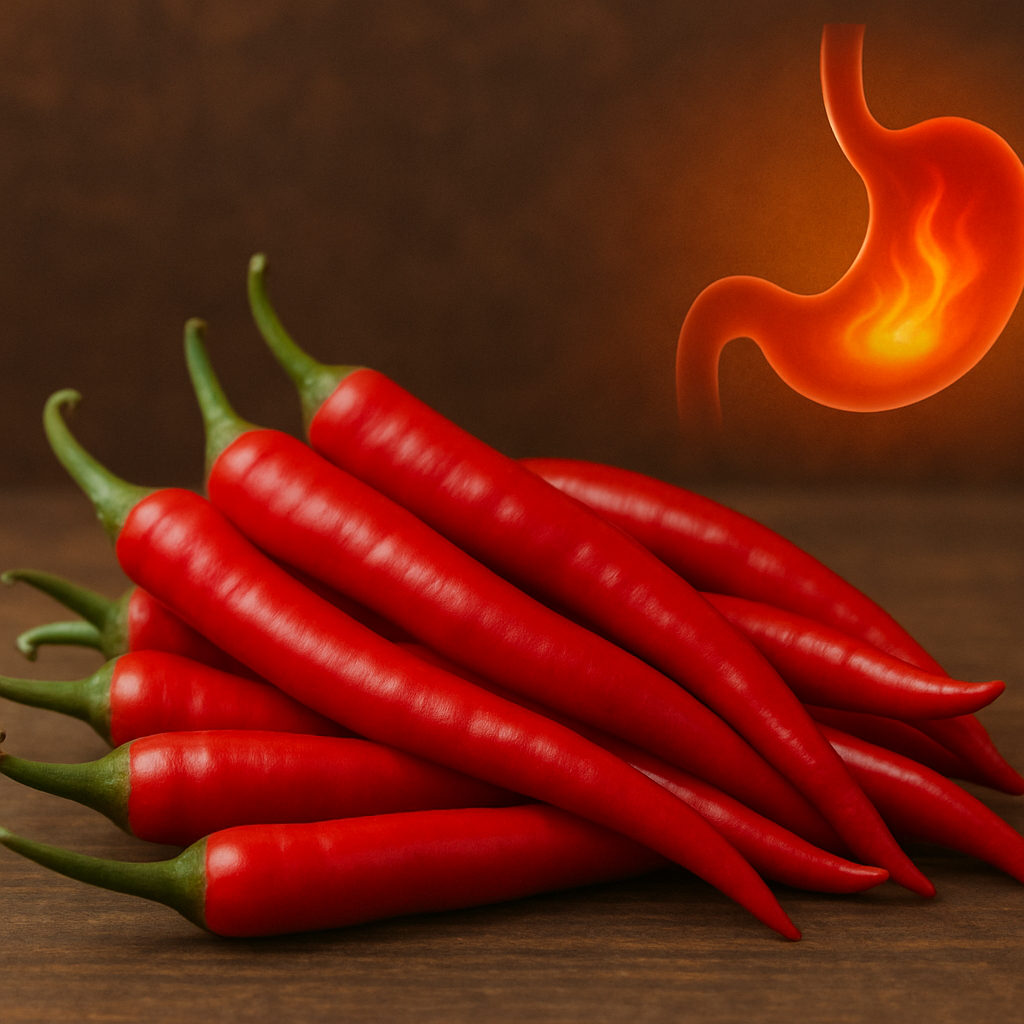
Gastritis, acid reflux, or digestive sensitive individuals must keep consumption to a minimum.
Balancing spices thoughtfully is mandatory to reap benefits without causing discomfort.
FAQs
Q1: Are red chili and paprika the same?
No. Red chili is spicier because of capsaicin, whereas paprika is less spicy and comparatively sweeter.
Q2: Can red chili improve metabolism?
Yes. Capsaicin increases metabolism and aids in fat-burning.
Q3: Is paprika good for skin and eyes?
Yes. Paprika contains carotenoids such as lutein and zeaxanthin, which aid in skin glow and eye health.
Q4: Are red chili and paprika safe in Ayurveda?
Yes, in small amounts. They balance Vata & Kapha but can irritate Pitta if used too much.
Q5: Can chili or paprika help with pain relief?
Yes. Chili capsaicin is applied in Ayurvedic ointments and oils for relief from joint and muscular pain.
Call To Action
Moral of the story is that red chili and paprika are more than mere flavor enhancers, they are Ayurvedic antioxidants that enhance immunity, metabolism, and health.
The next time you sprinkle paprika on your meal or add red chili to your curry, keep in mind: you’re not adding spice, you’re adding a healing medicine from your kitchen shelf. If you want to add anything else, comment below and follow us for more tips on Ayurvedic diet and healthy lifestyle.
